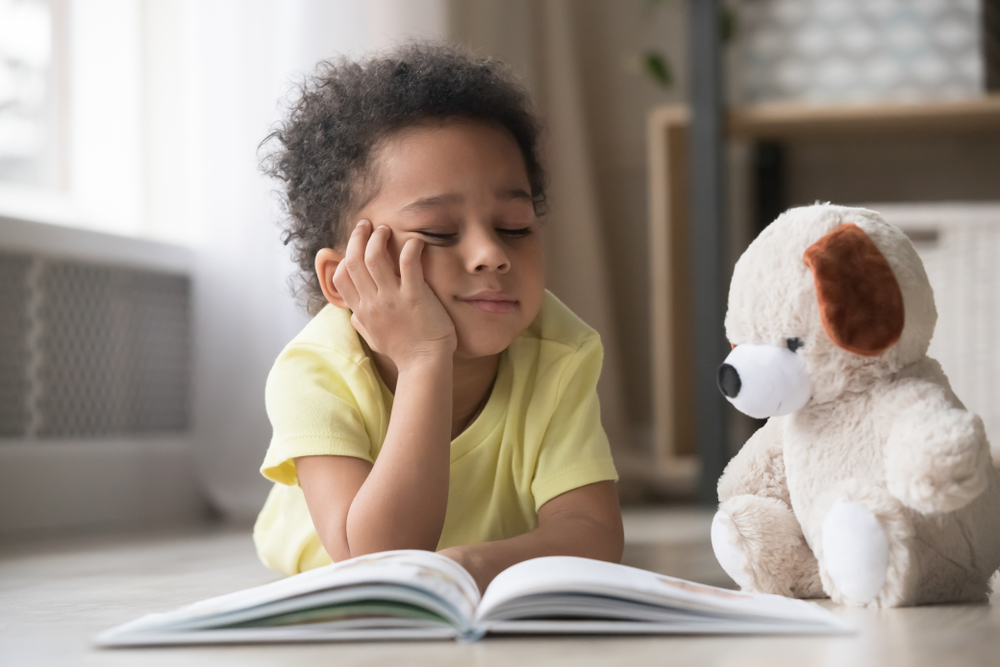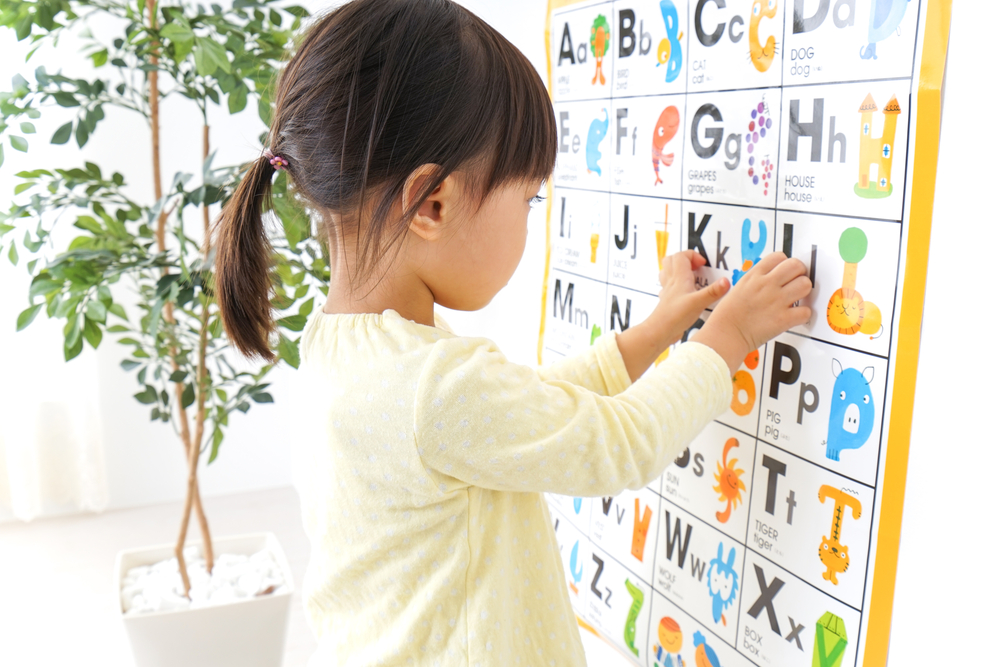
Parents of preschoolers may have been reading books to their child since infancy. Children of all ages love books and stories, and this love of listening to stories will begin to grow into a desire to begin exploring books as a reader.
There isn’t a right or wrong age to begin to work on reading skills with children. Some toddlers might even be precocious readers. If a child is interested in learning to read, then the journey can begin. What is the best beginning reading program for preschoolers, though?

Types of Beginning Reading Programs
There are multiple ways for parents to teach their preschooler to learn how to read. Parents can use reading programs that are app-based or they can simply develop their own methodologies. Here are a few ways to introduce preschoolers to reading:
- Singing the alphabet song
- Practicing the sounds of letters
- Playing letter match games
- Reading stories aloud
- Using wordless books
- Reading books at the appropriate level
- Using a reading app
Sing the Alphabet Song
Most parents know the alphabet song. This is a song that has been passed down for generations, and it’s also a fun way to help children learn their letters and the alphabet.
Learning the sounds of letters and identifying letters on sight is an early part of learning to read. Children can’t decode words if they don’t know the alphabet.
Parents also can find different variations of the alphabet song via YouTube. Turn on some alphabet videos and have fun singing the songs with preschoolers and teaching them the letters.
Practice the Letter Sounds
Decoding is about knowing the letters and their sounds. Help children learn the sounds of every letter in the alphabet by practicing with them.
There are many books that focus on the alphabet and have examples of the sound of each letter. These books also include pictures to help children correlate the letter with their sounds and objects that feature that letter. For example, A is for apples. Just saying the word ‘apple’ while reading helps children understand that “a” makes the short “a” sound.
In time, parents can introduce children to how the sounds of vowels change and how letters blend together to make new sounds. In the beginning stages of reading, though, parents can simply focus on the basics.
Play Letter Matching Games
Children can memorize the alphabet, but, again, they also need to be able to see a letter randomly and recognize it. To help children practice letters out of order, play a simple matching game.
Make 52 cards—two of each letter—and spread out the cards randomly. Take turns picking pairs and matching letters. Encourage children to say the letter when they make a match. Parents also can have children match a letter to a picture that starts with that letter.
Children who love technology also can play letter matching games on sites like ABCya. In addition, the App Store (for Apple) and Google Play (for Android) also may offer apps for alphabet matching fun.
Read Stories Aloud Together
Another simple way to practice reading skills is to simply read to children. Hearing a story helps children grow a love of stories and books. Encourage their excitement by reading books every day. Parents can talk about the book as they read. See if children can identify the characters and retell parts of the story.
It’s also ok to re-read favorite stories. Re-reading books is a great way for children to spot new details that they didn’t catch when they first heard the story.

Read Wordless Books
What are wordless books? These are books that only include photos. Children have to make up their own story as they read. These books encourage children to be the storyteller and to use their imagination to create their own unique plot, characters and story.
Reading Rockets compiled a list of their favorite wordless books. Check out some of the site’s picks or let the child choose a wordless book at the library or a bookstore. With wordless books, the story can change every time the child reads!
Read Books at the Appropriate Level
When children are beginning to sound out words and are starting their reading journey, choose books that feature words that are simple to sound out and decode. Start with the easiest level possible, and, if the child masters the text, parents can choose more difficult books.
Parents don’t want to cause children to become frustrated because the words are too hard. Keep the books appropriate to encourage reading enjoyment. Children may find a certain book too easy; that’s ok. Parents can then let them try to read books from the next reading level.

Use a Reading App to Guide the Reading Journey
Parents who want to help their preschooler begin their reading journey also could use a reading app like Readability. The app can be used from preschool through fifth grade.
For preschoolers, the app can be set at the lowest reading level. With Readability, children read stories aloud. For this reason, parents will want to make sure that the level selected isn’t too difficult for a young preschooler.
Readability includes a built-in AI tutor that is designed to learn each child’s voice. As a preschooler reads, they might stumble or say a word or have some trouble with the text. The tutor will recognize that the child is struggling and will offer help.
The AI tutor also will ask preschoolers questions at the end of each story. This is how the program measures the child’s comprehension. Children don’t advance to the next reading level until they are proficient at their current reading level.
Preschoolers who are using Readability to learn to read also can benefit from the program’s immersive features. For example, children can tap on a word to hear its definition or hear the word used in a sentence.
Each story also includes a unique vocabulary list. New words discovered in each story are added into the child’s word bank. They can review words again and again to better understand the definition and the pronunciation, too.
Readability also includes a new Storytime feature. Preschoolers can choose to listen to their favorite Readability books as they follow along. Hearing a story can help aid comprehension, and many children simply enjoy having a story narrated.
Parents who are interested in exploring the program with their preschooler can sign up for a free seven-day trial.
More Ways to Guide a Beginning Reading Program
Preschoolers can be extremely inquisitive. While parents can read to children, play games with them to help them master their sounds and letters and even begin an online reading program to help them learn to read, one of the easiest ways to encourage reading is by helping children understand that books are wonderful sources of information.
Many parents have been asked questions by their child that leaves them stumped. Sometimes children ask questions that are impossible for parents to answer. However, when a parent can’t answer a child’s question, instead of saying “I don’t know,” they can say “Let’s find out.”
Take children to the library to uncover the books that answer the questions that parents can’t answer. This can help teach children that books are wonderful resources that can be used for entertainment and for knowledge.
Find a book that explains the different colors of light and why the sky looks blue. Find a book at the library that explains how snow forms or why we sneeze. There are books that hold the answer to nearly any question that a child asks a parent.
To encourage the reading adventure, parents can encourage a child’s curiosity. Parents might even discover that they learned something new, too!

 Español
Español